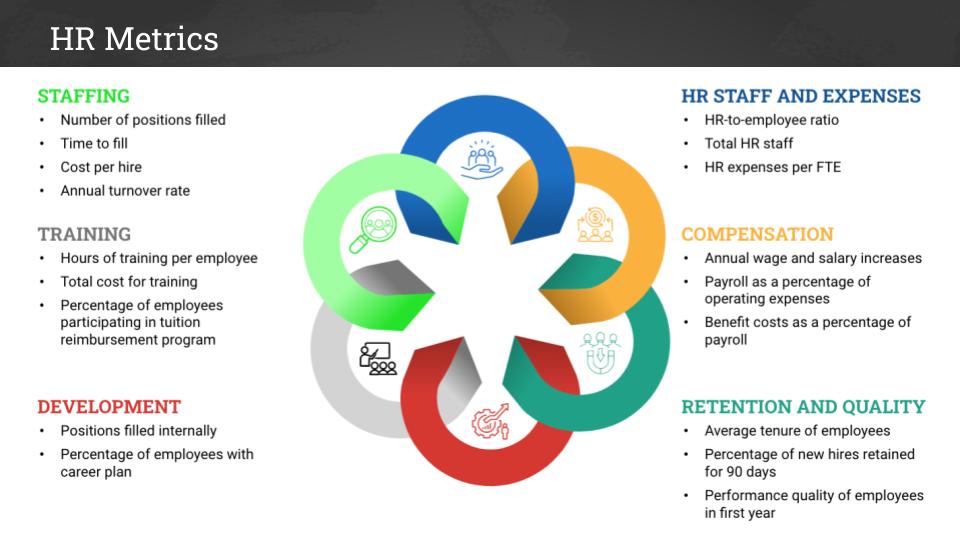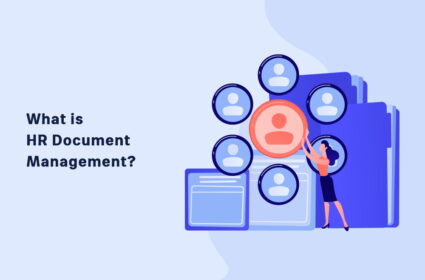HR document management is the standardized, systematic management of all documents related to the Human Resources (HR) department.
HR document management helps teams follow approved standards for creating, reviewing, modifying, issuing, and distributing documents. It stores documents, makes them easy to find and access when needed, and enforces security protocols to prevent unauthorized access to sensitive information and employee records.
What Does the HR Department Do?
The most important asset of an organization is its human resource. The HR department in an organization performs many important functions related to human resource management.
Recruitment and Employee Onboarding
Posting job descriptions, interviewing and selecting candidates, and developing orientation schedules for new hires.
Training and Development
Arranging training sessions and courses, periodically or when required.
Payroll Management
Processing paychecks and tax forms.
Legal Compliance
Ensuring compliance with local and federal labor laws.
Types of HR Documents
The HR department has to manage many types of company-related documents, such as:
- Job profiles and job descriptions
- Onboarding documents
- Organogram
- Salary structure
- Compensation and benefits structure
- Time and attendance standards and records
In addition, the HR department also has to manage many employee files and documents, such as:
- Personal information, including social security numbers and medical records.
- Employee contracts
- Payroll records
- Resumes
- Performance reviews
- Applications
- Recruiting information
Why is HR Document Management Required?
With hundreds or even thousands of employees and several documents per employee, it would be next to impossible to manage the documents without a proper system in place. In addition to employee documents, the HR department also has to manage several documents related to organizational policies and procedures.
HR document management uses systems to ensure HR documents are accurate and up to date. It protects data with security protocols, ensures regular updates, enforces proper procedures for document changes, and removes any inaccurate or outdated files. HR document management relies on detailed, documented processes and procedures based on industry best practices.
The exact set of HR document management processes and procedures implemented by an organization will vary depending on its specific needs. Several factors determine these needs, including laws and regulations, the industry in which the organization operates, and whether its staff works locally or across multiple regions.
Benefits of HR Document Management
Here are the benefits of hr document management.
Administrative Efficiency
Having systems in place is one of the cornerstones of management. Organizational systems consist of processes and procedures that work together to achieve specific goals. Standardized processes and procedures for HR documentation ensure that documents are accurate, contain relevant and up-to-date information, and are accessible.
Efficient Workflows
Work flows smoothly when the proper procedures for creating and storing documents are clear and known to all. Finding documents is also easier when everyone knows how to locate them when required. An HR document management system helps you create systematic workflows for document creation and storage.
Legal Compliance
The HR department has to maintain and store employee documents to comply with state and federal laws. An HR document management system helps you comply with laws and access documents when required.
Privacy
HR maintains several documents containing sensitive employee records and data, including compensation, medical records, and other personal information. An effective HR document management system protects sensitive information and ensures that only authorized personnel can access it.
How to Implement an HR Document Management System?
Map HR Documents
The first step in creating an HR document plan is to identify all the documents and employee records that the HR department needs and manages.
Map Workflows
Identify the process that each document will need to go through during creation, review, approval, update, distribution, and disposal.
Identify Access Needs
Map the access needs for staff to the type of documents that they will need to access, the frequency of access, and the access method.
Identify Security Requirements
Identify the appropriate security level for each type of document and the processes required to achieve it. Local, state, and federal laws and regulations play a significant role in establishing security-related requirements.
Identify Storage Requirements
Identify how long each document type should be retained and when it needs to be updated. Create a plan to assign expiration dates for disposing of outdated records and data. Decide which documents will be stored as hard copies and which as digital files. You should also establish a system to control access to all stored documents.
HR Document Management Software
Just imagine a room or a warehouse full of filing cabinets, or a computer sitting on a desk, humming quietly. As an HR professional or HR team member, what do you prefer?
A few decades ago, this question would not have been relevant. In the modern workplace, computers and information systems support a wide range of organizational functions. Employee file management software helps store, access, and share employee data and records efficiently and securely. File management software also performs many document control functions, such as audit tracking and version control.
What is an HRIS?
A human resources information system (HRIS) is software designed for HR electronic document management.
An HRIS stores employee and organizational data and combines a number of features to help HR team members at every level do their jobs more effectively.
HRIS systems typically include modules that support specific HR functions such as employee records, recruitment, payroll and compensation, and performance management. This modular structure allows organizations to implement only the components they need and add more later as their requirements evolve.

Benefits of HRIS
Automation
One of the most significant benefits of document management software is workflow automation. This feature helps eliminate delays caused by misplaced paper employee files and documents, a common problem in paper-based document management systems.
Not only are workflows automated, but they can also be optimized and changed easily. Workflow automation improves productivity and positively impacts the bottom line.
Customization
HRIS systems can be customized to the particular needs of organizations and industries.
Third-Party Integration
HRIS systems support integration with other information systems such as payroll software, applications tracking systems (ATS), and learning management systems (LMS)
Compliance
By storing, organizing, and making all required information and documents easily accessible, HRIS systems facilitate compliance when painful audits or other legal matters arise.
Robust Security
It is easy to ensure security and privacy with encryption and password protection.
Data Analytics for HR management
Several HRIS vendors offer integrated analytics modules that enable you to use HR analytics, aka people analytics, to take a data-driven approach to HR management. You can analyze data and measure the impact of a range of HR metrics on overall business performance. You can then make data-backed decisions to improve business performance.
Important HR Metrics
A few examples of essential HR metrics include:

Cost per Hire
The average cost of hiring a new employee. You can calculate this number by adding internal and external hiring costs and then dividing the total by the number of employees hired over a given period.
Revenue per Employee
Total revenue is divided by the total number of employees.
Cost of HR per Employee
The total amount spent on HR functions is divided by the total number of employees.
Retention Rate per Manager
The number of employees who remain with the organization over a given period is divided by the total number of employees. This metric can also be analyzed at the team or manager level for deeper insights.
Conclusion
Every organization needs systems to manage goals, employees, and departments. Without these systems, the organization would not be able to function.
The HR department is a key component of every organization. It handles several processes related to employee hiring, training, and career progression. The HR department also maintains sensitive employee data and data required for legal and regulatory compliance.
An HR document management system ensures HR documents are managed throughout their lifecycle in accordance with approved standards. It also safeguards records by enforcing security and privacy guidelines that prevent unauthorized access.
Much of the document management in organizations is nowadays handled by dedicated software. In addition to several other advantages, a significant benefit of this approach is that organizations can analyze the data, identify trends, and make decisions that improve performance and drive business growth.
FAQs
Here are the most frequently asked questions about document management.
What is HR document management?
HR document management refers to the process of creating, organizing, storing, and maintaining employee-related documents securely and efficiently. It includes both digital and paper-based systems used to manage files such as contracts, performance reviews, onboarding forms, and compliance records.
Why is HR document management important?
Effective HR document management ensures compliance with labor laws, improves data security, reduces manual errors, and saves time. It also makes it easier for HR teams to retrieve employee information quickly and support better decision-making.
What types of documents should be included in HR document management?
Typical documents include employee contracts, resumes, onboarding forms, training certificates, payroll information, disciplinary records, and termination letters. All employee-related records should be organized and stored according to company policy and legal requirements.
How can companies transition from paper to digital HR document management?
The transition involves scanning paper files, adopting a document management system (DMS), setting access permissions, and training HR staff. Many organizations also integrate digital signatures and automated workflows to eliminate paper dependency and boost efficiency.
What are the key features of a good HR document management system?
A robust HR DMS should include secure cloud storage, version control, audit trails, access controls, automated retention policies, and integration with HR software. These features ensure data integrity, security, and easy collaboration across teams.
How long should HR documents be kept?
Retention periods vary by document type and local regulations. For example, payroll records might need to be retained for at least three years, while employee contracts and termination records may need to be kept for six years or more. Always consult your local labor and data protection laws for guidance.
If you are new to HR document management and looking to learn more, we recommend taking our Technical Writing Certification Course, which covers the fundamentals of managing technical documentation in HR.



















